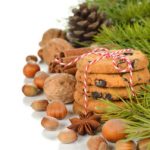Hidden Foods – Why Reading Labels Is A Must

Hidden foods represent a major challenge for children with allergies. Parents must be keenly aware that serving even small amounts of certain hidden food ingredients to children with food allergies can be potentially fatal. You can reduce the risk of your child eating a hidden problem food if you know how to read food labels for possible allergens, as well as the alternative, unfamiliar names of common allergenic foods.
Since 2004*, it has been much easier for people with food allergies to avoid packaged products that contain hidden food allergens because a federal law requires that the labels of most packaged foods marketed in the U.S. disclose—in simple-to-understand terms—when they are made with a “major food allergen.” However, there still may be other allergens not in bold type that don’t appear to be an allergen at first glance. To discover all possible allergens have a product in front of you with the list of its ingredients. Note the bold, highlighted, or obvious allergens on the label and keep in mind that the true label of the product may be on the inside or outside of the package.
Note whether or not the product was “manufactured in a facility that also manufacture’s “xyz” or “may contain traces of xyz”. Studies have shown that 20% of packages with these labels contain enough of the allergenic food to trigger a reaction. Machinery used in manufacturing may contain trace amounts of a hidden food allergen and be the same as ingesting the actual allergen in a pure form. Also note the allergens in bold letters.
Eight foods and ingredients containing their proteins are defined as major food allergens. These foods account for 90 percent of all food allergies:
- Milk
- Egg
- Peanut
- Tree nuts
- Fish
- Shellfish
- Wheat
- Soy
Here’s an example of hidden foods in wheat products. A wheat-free diet contains a high number of alternative names in its category. When reading a label for a wheat-free diet, avoid foods that may contain or be related to the following:
Bread crumbs, bulgur, cereal extract, club wheat, couscous, cracker meal, durum, einkorn, emmer, farina, flour (all-purpose, bread, cake, durum, enriched, graham, high gluten, high protein, instant, pastry, self-rising, soft wheat, steel ground, stone ground, whole wheat), hydrolyzed wheat protein, kamut, matzoh, matzoh meal (also spelled matzo, matzah, or matza), pasta, seitan, semolina, spelt, sprouted wheat, triticale, vital wheat gluten, wheat (bran, durum, germ, gluten grass, malt, sprouts, starch), wheat bran hydrolysate, wheat germ oil, wheat grass, wheat protein isolate, and whole wheat berries.
Milk products are another example of hidden foods. If a food contains the milk-derived protein “casein,” the product label will have to use the term “milk” (as well as the term “casein”) so people with milk allergies can clearly understand the presence of the allergen they need to avoid.
For more information on food allergen labeling, read the complete report from AAFA (Asthma and Allergy Foundation of America).




